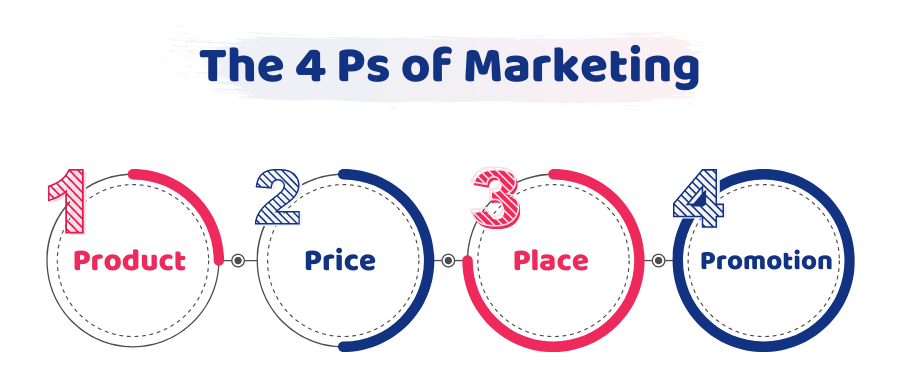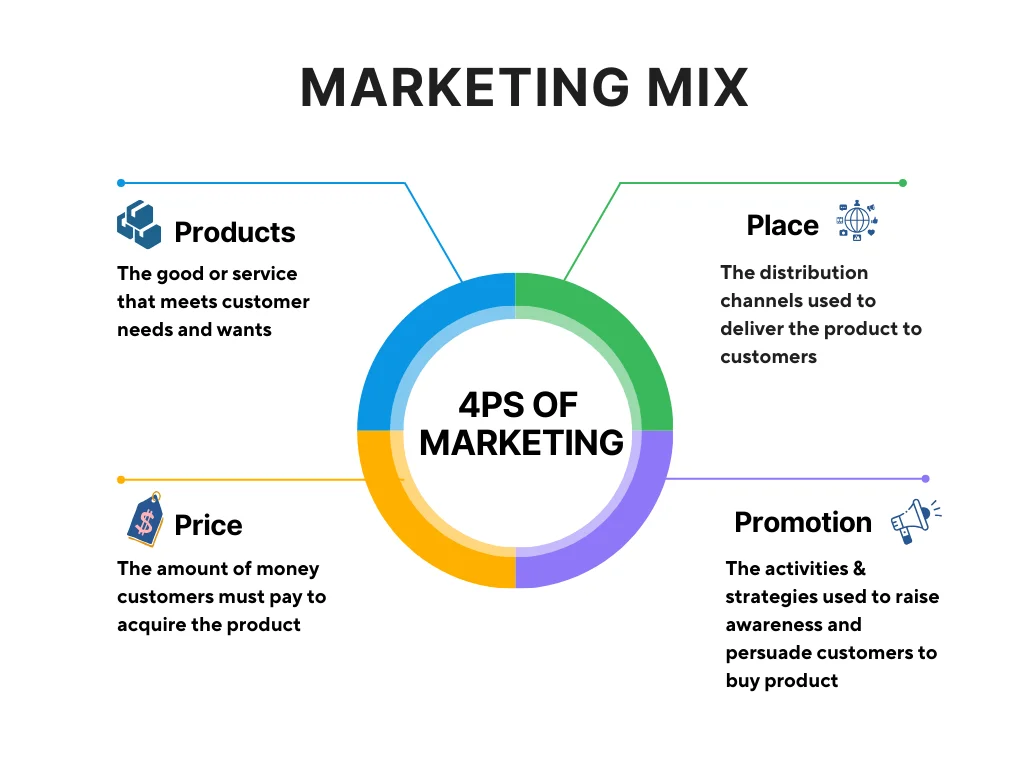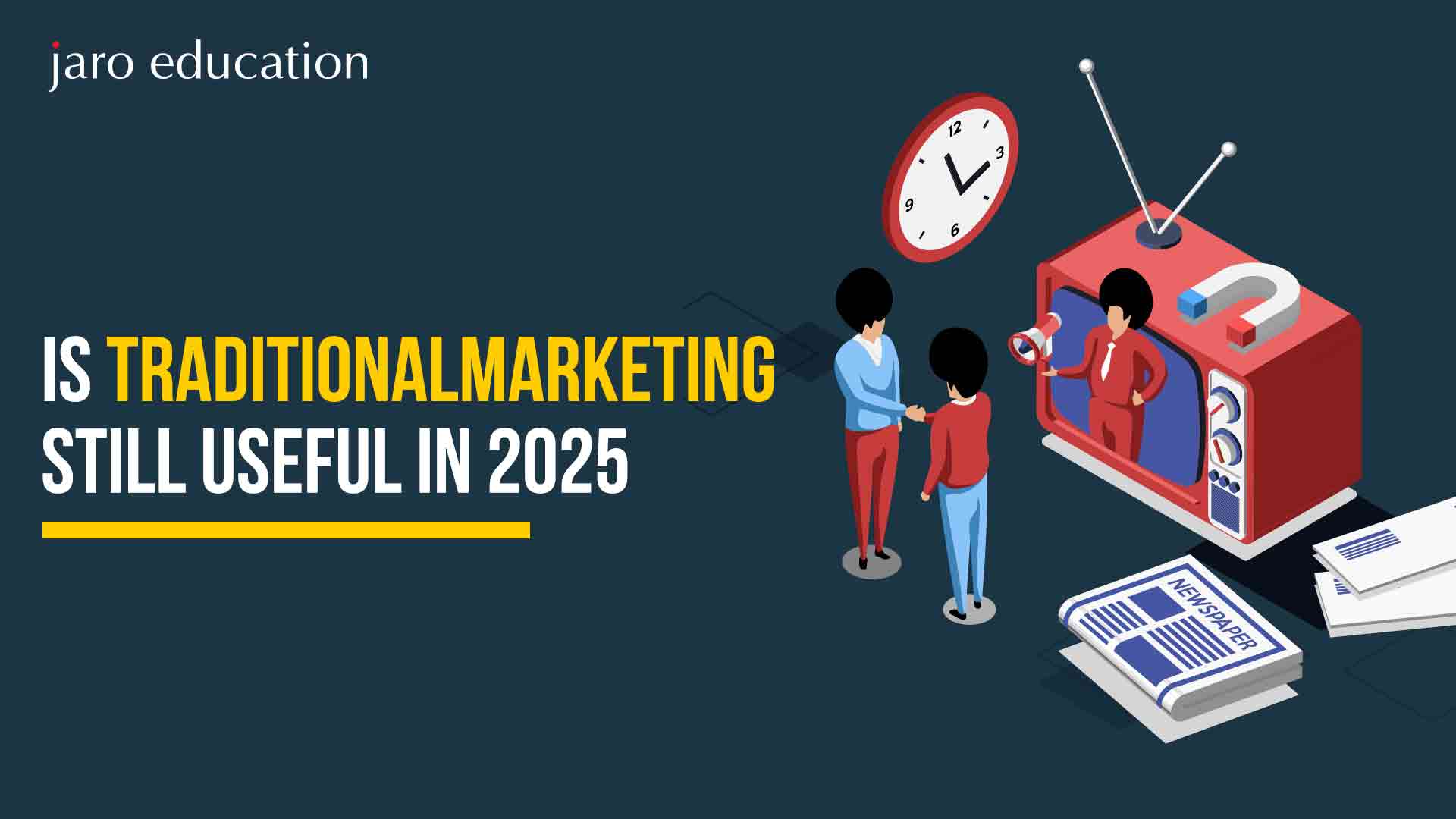4Ps of Marketing: What They Are & How to Use Them Successfully
Table of Contents

What’s the most challenging thing in marketing? Well, delivering the right product at the right time at the right place and of course, at the right price. These marketing strategies might seem simple, but they are fundamental to achieving sustainable growth and success. They are called the 4Ps (pillars) of any successful marketing approach, showing the way to business in creating extraordinary propositions that align with customers’ requirements, needs and desires.
Thus, it is important to find the right mix of marketing so that each element – Product, Price, Place, and Promotion – works in harmony. Given the current competitive marketing circumstances, understanding the principles of the 4Ps of marketing could be the key to the long-term success of your business.
In this blog, we will dive into each of the four Ps of marketing, including what they are and how to implement them successfully. Stay tuned to the end of the blog to learn more.
Understanding the 4Ps of Marketing

accountingfirms.co.uk
The 4Ps of Marketing—Product, Price, Place, and Promotion—were first noted by E. Jerome McCarthy in the 1960s. These 4Ps are also referred to as the marketing mix and serve as a foundation for marketers to create strategies to balance consumer demand, competitive advantage, and profitability.
When all 4Ps of marketing work together, companies can create impactful marketing campaigns that appeal to the right prospects. Let’s look at them one at a time.
1. Product
As we know, a product is the core of marketing activities, and it could be a physical product, a service, or an experience. Thus, when creating a marketing campaign, begin with understanding the product itself, such as for whom you are creating it and why. Take note of it: whatever marketing campaigns you are involved in, they can not build a sustainable level of success if the product on offer does not meet consumer expectations.
So, you can follow the given guidelines to create an effective product strategy:
- Identify needs – Start with understanding what problems your product is solving.
- Design & features – what functional design characteristics truly meet those needs?
- Brand & packaging – well-crafted design and good aesthetics are a good way to build trust and recall.
- The quality & durability of your product – Credible products lead to repeat purchases and brand loyalty.
- Differentiation – Ask yourself: How does my product differentiate itself from competitors?
2. Pricing
The price is more than the cost of your product. Price plays a significant role in perception, positioning, and profit margins. The correct pricing strategy will reflect value to your customers while ensuring that your business is making a profit. But most of the brands deal with the same question: how to keep the pricing? Well, here we have shared some popular pricing strategies that can be helpful:
- Cost-plus pricing – observed the cost of production with a margin on top. Cost-plus pricing is typically used by manufacturers but can also be relevant for agencies, service providers, and rental businesses.
- Value-based pricing – pricing determined by the value customers perceive the product is worth.
- Competitive pricing – pricing to match the competition or slightly below.
- Premium pricing- pricing higher to address exclusivity and luxury.
3. Place
Place is defined as where you market and sell your product and what distribution channels you use to reach the customer.
Like price, finding the right place to market and sell your product is critical to reaching your target market. If you choose a place where your target customer does not shop, online or in person, you probably won’t reach your sales volume target. The right place can create a connection with your target audience and set you up for success.
For example, if you are selling an athletic shoe, your target market is athletes between the ages of early twenties to late thirties, you can market your shoe in sports magazines and sell your shoe at sports speciality stores. Because you are marketing at an athletic store, it is not a shoe store, your leverage is to the specific place that best serves your marketing mix.
4. Promotion
The main goal of promotion is to let your consumer know about your product and its pricing. The 4Ps of marketing consist of advertising, public relations, and overall media strategy that help to introduce a product in the market. To put it simply, promotion is how you engage your audience and shape their brand perceptions. You can follow the strategy given below for promotion:
- Build Emotion-Driven Campaigns: Customers can connect with emotions and stories much more deeply than they ever could with features. Place campaigns at or around values, aspirations, or causes.
- Use Influencers and Social Media: Influencer partnerships or targeted ads can help amplify brand visibility while reaching a specific targeted audience by demographic.
- Measure ROI & Refine Strategies: Be sure to track every campaign’s performance using analytic tools. Take any updates as a result of the data you received to prevent wasting money on advertising.
How To Use the 4Ps in Your Marketing Strategy

*mageplaza.com
While each of the 4Ps of marketing is powerful individually, real results can be achieved when all these Ps are put together seamlessly. Here’s the step-by-step guide to using 4Ps in your marketing strategy:
Define Your Product
Every effective 4Ps of marketing strategy starts with defining the product. First, what is the specific problem you are solving or what need is being fulfilled? You can identify/surface information about the preferences, pain points, and expectations of the customer base with market research. After evidence reveals insight, be sure to define the product’s key features, the benefits it provides, the unique selling points (USPs), and how it differs from competitors. Well-defined products provide a basis for positioning and identity.
Set a Pricing Strategy
Pricing is another important part of the 4Ps of marketing; it conveys value. To set the right price, you need to look at costs, competitor pricing, and what your customers are willing to pay. After you do that, it’s time to find a pricing model that fits your needs; it could be cost-plus or value pricing, competitive, penetration, or premium pricing. For example, premium pricing can elevate a brand perception, and penetration allows you to grab market share quickly. The most important thing is to balance profitability with customer “wantability”.
Decide on a Place
“Place” means how and where customers gain access to your product. This means businesses must consider the many ways customers can consume goods and not be limited to traditional physical locations. Consider: Where do your customers prefer to shop? Retail or in-person? Online? Do they prefer distributors or other “dealers”? Maybe they want to use all three options? When it comes to digital products, consider the app store or subscription-based distribution models. As you’re considering where to distribute your products, make sure you have the right logistics and supply chain requirements in place to ensure that customers receive seamless access to their goods and do not experience any delays.
Develop a Promotion Plan
Promotion is a representation of your Brand—the voice of your company, generating awareness and value. Determine relevant channels to maximise effectiveness based on where your audience spends time, which may include social media, paid search ads, influence marketing, traditional media (television, radio, print), or email selection. Consistent messaging and benefits that relate to and confirm your offer position in the market are key. You’ve defined your Brand, position and target audience; track performance with key metrics (KPIs) and create benchmarks and conditions for refining the program based on results.
Align All Four Ps
Ultimately, success is about integration. Your product, price, place, and promotion must work together to create a coherent brand experience. When they are aligned, the 4Ps of marketing ensure that people can not only find out about your product, but, more than that, they will value it, buy it, and become loyal to it.
Real-World Example of 4Ps
One excellent real-life 4Ps of marketing example at work is McDonald’s, one of the most recognised fast-food chains in the world.
Product: McDonald’s sells classic burgers, fries, drinks, and desserts, while also implementing a menu that caters to the local tastes in each region. For example, McDonald’s sells an item called the McAloo Tikki in India, recognising the most appealing taste for their target customers. And this McAloo Tikki is only sold in India, not anywhere else.
Price: McDonald’s operates on an affordable pricing strategy, making sure their meals are priced so they can sell to a wide audience. They offer value meals, combos, and continuum pricing to entice customers seeking value and family-owned customers.
Place: With McDonald’s global presence, they certainly know how to place their brand for maximum impact. McDonald’s restaurants are located everywhere that their target customers are, including cities, malls, airports, and even highways.
Promotion: McDonald’s does a lot of advertising and promotion, mostly using television commercials, social media ads, sponsoring celebrities, and limited-time seasonal promotions. This keeps customers coming back for special deals and makes them marketing experts.
Thus, with this example, it has been understood that by properly managing the subconscious balance of the 4Ps of marketing, McDonald’s has continued to dominate their industry as a fast-food leader.
Why the 4Ps of Marketing Matter
The 4Ps of marketing are not just academic theory; they provide businesses with a practical framework to align their strategies. Here’s why they are essential:
Holistic Approach
The 4Ps of marketing are powerful because they bring consistency. As mentioned above, only focusing on just one of the Ps of the 4Ps of marketing is not likely to work. For example, a great product without any promotion isn’t likely to be successful. By concatenating each of the four Ps, businesses ensure that every aspect of their overall strategy, from the product and pricing to communicating with their customers, will be cohesive. This approach makes it more probable to deliver a seamless customer experience and achieve improved results.
Customer Focus
At the forefront of present-day marketing is customer focus. While objective measurement may be hard, the connective tissue of the 4Ps of marketing offers a useful way to approach customer focus. Companies can use such a marketing mix to develop a product that solves a real problem, price it, place it in a location where it can be purchased, and promote it in a way that resonates with potential customers.
By concentrating on and designing strategies around delivering customer value rather than sales value, it makes it more likely that companies will be able to perform each of the Ps in a successful and coherent manner.
Competitive Advantage
In a crowded marketplace, it can be a challenge to stand out with your brand message. But with 4Ps of marketing, you can help your brand position itself uniquely in its respective categories. Through better features, pricing, distribution, or promotional plans, a business can take the 4Ps and uniquely position itself against competition. This uniqueness is a very valuable asset to have when it comes to acquiring and retaining customers.
Profitability
Good marketing is the reason why your brand can see success and profit. The marketing mix 4Ps allows businesses to focus on optimising pricing and promotions to maximise revenue while minimising costs. For instance, tiered pricing will help maximise flexibility for different customers, while targeted promotions stop waste. By aligning product value with pricing and promotion to customers, companies can create sustainable, growing profits.
Scalability
Finally, the 4Ps of marketing can be used as a blueprint for the growth of a company into different markets, products or customer segments and can help to maintain consistency when facing problems. It helps a company grow in a structured, customer-focused focused and profitable manner.
The Bottom Line
The 4Ps of Marketing: Product, Price, Place, and Promotion, are the foundation of every successful marketing strategy. They may seem a simple strategy, but businesses that implement it efficiently and strategically outperform their competition. The only thing you have to take care of is tailoring each element of the marketing mix according to the market demands.
If you’re serious about building a future in marketing, Jaro Education can be your game-changer. With programs designed to blend theory with real-world application, Jaro helps you not just learn the 4Ps of marketing and 7 Ps of marketing but actually put them into action.
What makes Jaro stand out is the focus on industry-driven skills and expert mentoring, so you’re not just reading about marketing, you’re learning how to do it like a pro. Thousands of learners have already transformed their careers here, thanks to strong career guidance, placement support, and hands-on learning.
Frequently Asked Questions
What are the 4Ps of Marketing?
The 4Ps of marketing, known as Product, Price, Place, Promotion, are the structure of a marketing strategy, otherwise known as the marketing mix.
Why are the 4Ps important?
They serve to assist a company with finding an effective balance between customer needs, its competitiveness and its profitability, providing awareness for long-term growth.
Can the 4Ps work for small businesses?
Yes! The 4Ps of marketing can also help small businesses hook new customers, find effective pricing, and enhance visibility.
What’s an example of 4Ps at work?
McDonald’s applies the 4Ps of marketing in relation to pricing their good products at inexpensive prices, making them globally available and having sponsorship for powerful promotions.

















